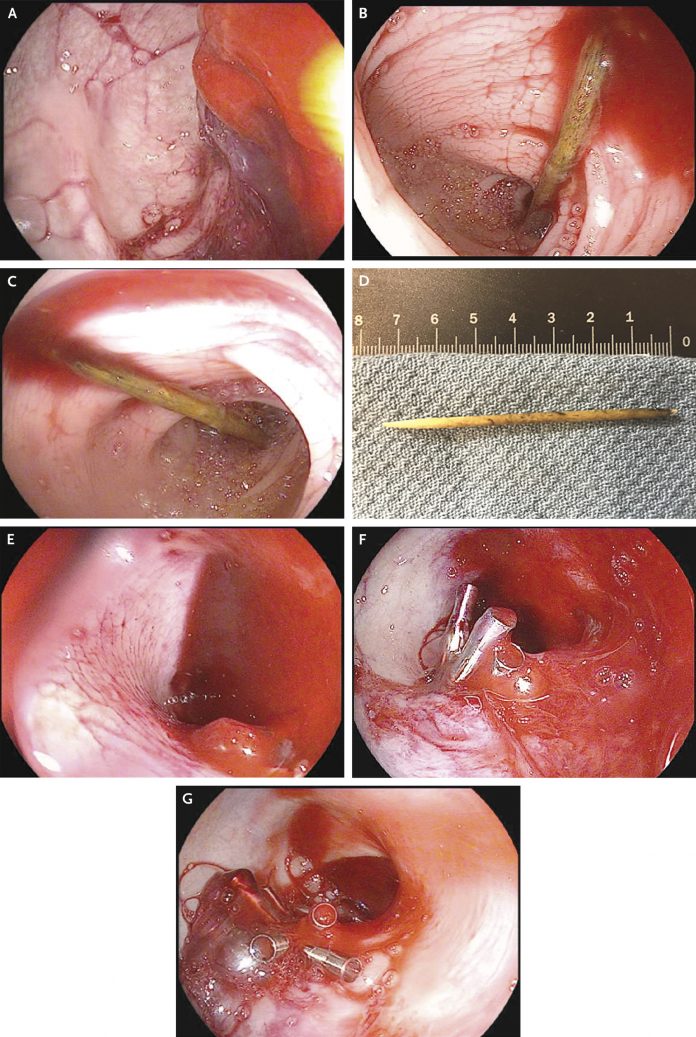
A young teenager suffers complications due to an ingested toothpick
An 18-year-old professional athlete unintentionally swallowed a wooden toothpick while having a sandwich during his trip to the southeast US for his athletic training. A day later, he presented to the emergency department with sudden onset of diarrhoea, mild postprandial nausea, fever, and pain in the right lower quadrant of the abdomen.
However, during his stay in the ER, he underwent a series of investigations and scans, but the doctors could not reach a specific diagnosis. Therefore, they stabilised and discharged him after 5 hours.
During the next 2 weeks, his symptoms improved. Although initially the pain and fever subsided, nausea persisted. During another training trip, his symptoms returned. He complained of pain, bloody stools, and high-grade fever. In the ER, he underwent an MRI which could not unveil the aetiology.
An internist advised him to return home and undergo further evaluation. Following the advice, he returned home and consulted an internist. The doctor advised him to have a colonoscopy. As a part of the bowel preparation prior to the colonoscopy, he took the bowel-prep regimen after which he had a bowel movement with a large amount of blood. He also experienced fever with chills and severe pain.
He was referred to a hospital where the doctors admitted him. Blood culture revealed bacteremia. However, there his condition worsened. His body temperature spiked to 105 degrees and he was tachycardic. Subsequently, the patient had rapid breathing and a confused mental status. The doctors suspected septicaemia.
The doctors performed colonoscopy and this time they diagnosed him.
They found a toothpick lodged in his colon, piercing through his intestinal wall and into a neighbouring, large artery. They removed the toothpick. However, it led to profuse bleeding. The bleeding could not be controlled; therefore he underwent surgery to stem the life-threatening bleeding. Intraoperatively, the surgeons found that the toothpick had also slashed the right common iliac artery. They had to cut out a 3 cm chunk of the artery and they replaced it with tissue harvested from a vein in his leg.
A week later, the patient had recovered substantially. He was able to walk independently; however, for his professional game, he needed seven months of rehabilitation and training.



